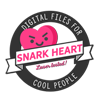Safe & Unsafe Materials

When it comes to laser cutting and engraving, not all materials are created equal.
Some materials are perfectly safe to work with, producing clean cuts and engravings, while others can release toxic fumes, damage your machine, or pose serious health hazards.
Knowing the difference is crucial for both your safety and your equipment’s longevity.
When in doubt, don’t cut it!
✅ Safe Materials for Laser Cutting and Engraving
These materials are generally safe when used properly with a laser cutter:
Natural Woods (such as Baltic birch, maple, cherry)
Solid wood is great for laser cutting and engraving. Always verify that the wood is untreated (no chemical coatings).
Acrylic (Cast Acrylic, PMMA)
Cast acrylic cuts cleanly with a laser and produces a frosted or polished edge, depending on settings. Avoid extruded acrylic for intricate cuts.
Paper, Cardstock, and Cardboard
All cut and engrave well, but they are highly flammable—use low power and close supervision.
Leather (Vegetable-Tanned Only)
Natural vegetable-tanned leather is safe. Be very cautious, as synthetic or chrome-tanned leather can be hazardous (see unsafe materials below).
Cotton Fabrics (100% cotton, denim, canvas)
Safe for laser cutting and engraving, but always check that the fabric is not coated or chemically treated.
Glass and Stone (Engraving Only)
Lasers can engrave these materials beautifully but cannot cut them.
Anodized Aluminum (Engraving Only)
A laser can etch anodized aluminum surfaces but cannot cut metal.
⚠️ Materials to Avoid (Unsafe for Laser Cutting)
These materials should never be cut or engraved with a laser due to toxic fumes, machine damage, or fire risk:
PVC (Polyvinyl Chloride) and Vinyl (Sintra Board, Vinyl Decals)
Releases chlorine gas when cut—extremely toxic and corrosive to your laser cutter.
ABS Plastic
Emits cyanide gas when burned and tends to melt rather than cut cleanly.
Polycarbonate (Lexan, certain “bulletproof” plastics)
Very difficult to cut, discolors badly, and releases toxic fumes.
Fiberglass
A combination of glass and resin—produces toxic fumes and damages optics.
Coated Leathers (Chrome-Tanned Leather)
Releases toxic chromium compounds when burned—dangerous for lungs and equipment.
Pressure-Treated Wood or MDF with Formaldehyde Binders
These woods release toxic gases (formaldehyde, arsenic) when burned.
Styrene Plastics
Highly flammable and produces toxic, acrid smoke.
Unknown Plastics or Unknown Coated Materials
If you don’t know what it is, don’t cut it.
Quick Safety Tips
- Always verify your material with the manufacturer or supplier before cutting.
- Check for coatings, adhesives, or treatments that could be hazardous when burned.
- Supervise your machine at all times—materials can ignite quickly.
- Use proper ventilation to remove smoke and fumes from your workspace.
- Have a fire extinguisher rated for electrical and chemical fires nearby.
When in doubt, don’t cut it!
If you’re ever unsure whether a material is safe, research it thoroughly or ask in a trusted laser community before proceeding. Your health, your equipment, and your workspace depend on it.




